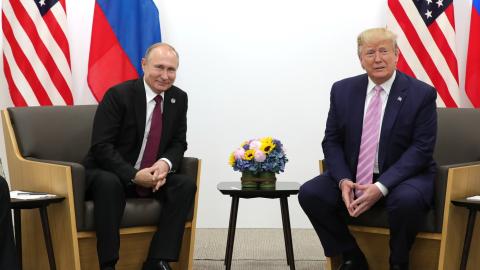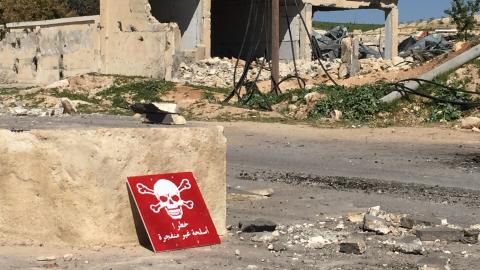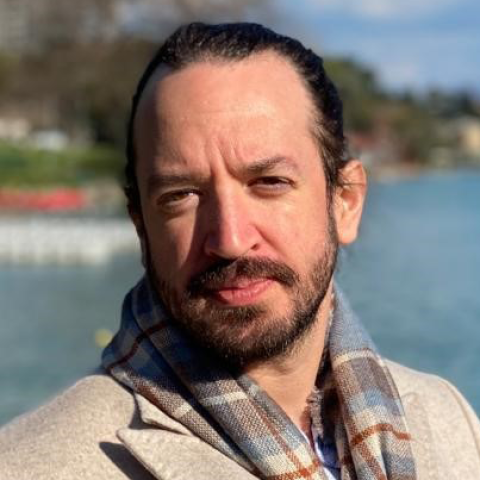When the Soviet Union disintegrated, the Muslims of Russia and the Central Asian republics began to rediscover their religious identity.1 But decades of anti-religious Soviet policies had shattered and nearly eradicated the Islamic traditions of those regions. The Sunni religious establishments had been either co-opted by communist rulers—and thus de-legitimized in the eyes of ordinary believers—or suppressed. The local syncretistic and relatively moderate traditions, generally linked to the historically strong Sufi presence in Central Asia and Russia, had faded into oblivion. After seventy years of living under a regime that prohibited any demonstration of religion, Tatars, Bashkirs, Uzbeks, Tajiks and other nationalities, traditionally identified as moderate Sunni Muslims, were left almost totally ignorant of the basic tenets of the Islamic faith. Russian and Central Asian Muslims thus found themselves in the throes of an ethnic and religious identity crisis, without the benefit of indigenous religious traditions or leaders to see them through. As one consequence of this, many of these Muslims began looking to the outside world for religious guidance.
This was the background of the well-documented Wahhabi penetration into Central Asia that began after the breakup of the Soviet Union. The Saudi religious establishment, along with the Egyptian Islamic establishment of al-Azhar, moved swiftly to revive Islam in those lands. In Central Asia, Saudi and Egyptian scholars from the Muslim world’s heartland held claim to an uninterrupted Islamic tradition and faced almost no organized indigenous challenge to their hard-line interpretation of Islam. In any clash between indigenous traditions and "the real Islam," imported from the Middle East, the former were clearly handicapped. Sunni Islamist movements took advantage of ex-Soviet Muslims’ religious ignorance as well as their desire to fill the spiritual vacuum in their lives. Wahhabi proselytizers were thus able to establish and maintain numerous mosques, Islamic clubs and societies that provided people with Islamic-oriented activities. And, ultimately, they also managed to inject a new element of Islamist ideology into the national struggle in Chechnya.
For much of the 1990s, this Sunni missionary activity was seen in many Western capitals as a positive and effective antidote to the threat posed by Iran, which was also seeking to enhance its own political position in Central Asia. Radical Shiite religious infiltration into the former Soviet Union began in the early 1990s, as Iran dispatched religious agents first into Azerbaijan, because of its large Shia community, and Tajikistan, because the Tajik language is akin to Farsi. Later, it set its sights on other Central Asian republics and on Russia itself. In these countries the Iranians launched a campaign to convert Sunnis into Shia—that is, "to bring them into the light" (istibsar).2 Compared with the Sunni movements, however, these early Iranian efforts were not very successful, mainly because the Wahhabi movements were better organized and financed. As such, Iranian missionary activity in Central Asia remained relatively limited in the 1990s.
In recent times, however, Iranian ideology has become increasingly influential in Central Asia and Russia. This has been due to many factors—from the Iranian regime’s new assertiveness to the pressures that regional governments have brought to bear on Wahhabi revivalist movements in the wake of the 2004 Beslan massacre and other terrorist incidents. Certainly since 9/11, there’s been heightened awareness around the world of the dangers of Sunni radicalism. Iran, meanwhile, has not been idle. It has succeeded in activating a Shia revivalist movement in both Central Asia and Russia. Though the Iranians have generally been more discrete than the Wahhabis, their impact on Muslims and even non-Muslims in these areas is now considerable.
Ahli Beit Reaches Moscow
The Muslim populations under Soviet rule were predominately Sunni. When the communist era came to an end, Shia were found only in Azerbaijan (about four million) and Dagastan (a few thousand). By the mid-90s, however, Shia organizations began to gain strength. Most Shia proselytizers in Central Asia were dedicated Iranian missionaries affiliated with the Iranian regime. Such preachers attracted followers particularly among Azerbaijani immigrants in the Ural region and Moscow, who had left their homes in search of work but often found themselves impecunious and unemployed. Not unlike their Middle Eastern counterparts in the West, these immigrants tended to be driven closer to Islam and radicalization by their expatriate status. And for them, any position in an Iran-funded Shia mosque or club—from lowly cleaner to religious clerk or preacher—was a godsend.
In 1996 a Shia society called Ahli Beit opened in Russia, its first branch headed by Musa Kurbanov. The organization already boasts a membership of thousands of Muslims, many of them Sunni by birth. It advocates unifying all Sunni and Shia madhhabs, or schools of thought, everywhere but particularly in the Russian Federation. On its website’s "about us" page, Kurbanov claims that his organization will "struggle with religious extremism and terrorism." He writes, "The main aim of Ahli Beit is to command people to good and prohibit them from evil."3 In its formal writings, the organization gives no indication of its relationship to Ahul Beit in Iran or of its Iranian orientation.
Ahli Beit has since grown and become highly active in Muslim communities in Russia. The organization founded a youth community, Sahib az-Zaman (The Lord of Time—an allusion to the "Hidden Imam"), and a women’s association, Fatima-Zahra, named for the Prophet’s daughter and Imam Ali’s wife. Kurbanov’s efforts also led to dozens of "Husseiniya" parades—which commemorate Imam Hussein ibn Ali, the first and foremost Shia martyr and grandson of Mohammed—being organized in Moscow.4 To avoid unnecessary attention from the government, these parades were kept modest and did not include the violent and bloody special effects that usually accompany Ashura5 parades in such Muslim states as Lebanon.
But Ahli Beit in Russia and Central Asia is not, in essence, a local organization. Rather, it is a branch of the Iranian government organization Ahul Beit. Shortly after the Islamic revolution, the new Iranian regime formed organizations to promote the idea of unifying all Islamic madhhabs and legitimizing the Shia Jafari school within a generic Islam that encompassed both Sunni and Shia. The raison d’être behind these efforts was clear: because a Sunni Muslim may accept the authority of any Sunni shaykh, whatever school he subscribes to, a Sunni could follow the authority of a Shia scholar if the Jafari school were considered just another school. And he could do so without having to cross the line and become a Shia.
There are two main organizations operating under the Iranian regime in this spirit. One is Majm-e jahani-ye ahl-e beit (Ahli Beit), which was headed by Ali al-Taskhiri until 1999, then by Ali Akbar Velayati, and since October 2002 by Mohammad Mahdi Assefi. The other is Majma-e Jahani Baraye Taqrib-e Bein-e Mazaheb-e Eslami (Society for Reconciliation Among the Schools) under Mohammad Va’ez-Zadeh Khorasani. Both organizations convene conferences of Sunni and Shia Muslims and arrange studies for Sunni Muslims in the madrasas of Qom. Much of this activity targets non-Arab Muslims, many of whom have later been accused in their home countries of operating for the Iranian intelligence.6
Unwitting Shia
Not content with simply leading existing Shia communities, Ahli Beit devotes considerable energy to istibsar. As noted above, one of Ahli Beit’s main goals is the unification of all Muslim madhhabs, but it does not indicate how this might be achieved. The modus operandi of the organization can be deduced from its activities in Yekaterinburg, home to the largest Shia community in the Russian Federation. Daniyal Tulencov, a 29-year-old Tatar convert to Shiism, is the leader of that community and founder of its Ahli Beit branch. He gave a speech on the day of Ashura in which he related how the celebration of Iman Hussein’s martyrdom has become more and more central in this community over the last eight years:
In the past we used to gather in my office and in people’s houses and apartments. Today, in the new democratic Russia, where there is freedom of faith and the government supports the believers and helps them to celebrate their holidays, we have gathered here. It’s the first time in the history of Russia, that LRMO (Local Religious Muslim Organization) Ahli Beit has been officially registered…. We invited and will invite everybody, no matter what their confessions are and what they believe in. Our guests have heard, witnessed and understood today what Imam Hussein died for. They understood that Hussein was willing to give up his life for his family’s sake. He was beheaded by his worst enemies when he was only 58 years old…. Imam Hussein has witnessed by his own blood that people should worship only Allah and no one but him, especially not Yazid7 ... we have guests from Azerbaijan and the Islamic Republic of Iran: Karbalai Tahir Shirvani, Karbalai Sakit and Karbalai Zulfigar.8
The Russian government’s support of the Yekaterinburg branch of Ahli Beit is indicative of the growing strength and legitimization of the organization. It is not clear, however, to what extent Russian authorities are aware of Ahli Beit’s true nature. While the Russian government is concerned about the growing number of immigrants from the Central Asian republics, it does not show any specific interest in the increasing number of Russian and Tatar converts to Shiism. Russia’s policy of supporting Muslims in the Russian Federation who are ostensibly anti-Wahhabi facilitates the activity of such organizations as Ahli Beit, which prosper by hiding their real identity under the neutral label of "local religious Muslim organization."
In his Ashura address, Tulencov did not refer even once to the Shia. This was not an oversight. The strategy of Ahli Beit is to obfuscate the differences between Sunnis and Shia, and thus to bring Sunnis unwittingly into the Shia fold. While there is no official count of Shia converts in Russia or the Central Asia republics, the number of actual converts is certainly much greater than the number of "declared" converts. Many "neo-Shia" simply do not realize that they have crossed the line and accepted religious tenets that have, in fact, converted them. If asked, they would probably describe themselves, in the spirit of Ahli Beit, as plain Muslims.
This trend of de facto tashayu (Shiitization) is evident in other areas of the Russian Federation as well. Bulat Yuldashiv, editor of the Sunni Islamic journal Risalat, which is published in Ufa, Bashkortostan,9 revealed in an interview that nobody knows how many Shia there are among the 400,000 Muslims living in Ufa. He noted, however, that the Sunnis in the city are following "a new tradition." For the last few years, they have been celebrating Nouruz (the Iranian New Year, Nouruz meaning "new day" or "new life") by visiting one of Ufa’s renowned mosques and holding special prayers. Though this holiday is indeed known among Central Asian Muslims, it was marked more in the breech than in the observance during the Soviet era. And it seems that its revival is related more to Iranian influence than to this community’s own ancient traditions.
The "neo-Nouruz" celebration is distinguished from older local customs by elements apparently imported from Iran.10 Previously, Nouruz-Bayram was observed mostly in Azerbaijan as a national holiday unencumbered by religious or symbolic features. The festival begins on March 20th or 21st, following the vernal equinox, and lasts thirteen days. The new customs involving the mosque facilitate Iranian influence. Because most of the prayers are in Arabic, many people do not understand the words. The Friday sermon (khutba) is in Azeri or the Tatar language, however, making it quite easy for the Shia organizers of these festivals to infuse unwitting Sunni Muslims with Shia doctrine.
Muslims all over Russia, mostly in the Ural region (Ufa, Chelyabinsk, Yekaterinburg), visit "Islamic clubs" and mosques without knowing they belong to the Shia movement in Russia or are being subsidized by Iran. Russians who want to convert to Islam and come to these mosques and clubs are, moreover, being automatically converted to Shiism after saying the Shahada. They learn about Shia principles that do not exist in Sunni Islam, such as mut’a marriage,11 recite stories about the life of Khomeini and read interviews with Moqtada a-Sadr. They hear that such men are Muslim or Islamic leaders—but not Shia.
Religion as Politics
Despite its ostensibly innocuous aims, Ahli Beit is essentially an Iranian political organization that fosters a Shia revival throughout the world. Hezbollah provides a particularly successful instance of this revival, and many of Russia’s new Shia are eager to demonstrate their political alignment with it by flaunting a militant, anti-American and anti-Israeli ideology. The Russian journalist Anastasia Fatima Ezhova, who converted to Shiism, is a prime example. A loyal supporter of Ahli Beit, she signs most of her articles under the pseudonym Fatima Hizbulla and maintains a blog on the internet called "The Black Banners of Khorasan."12 Her slogan, which appears at the end of all her articles, is: "Every day is Ashura, all the World is Karbala."13 But none of this has prevented Fatima Hizbulla from having a column on the official Russian-Islamic website www.islam.ru, even though this website is Sunni and quotes those of the Prophet’s companions (the Sahaba) who are maligned in Shia historiography. Fatima’s positions are brazenly anti-Semitic and anti-Western. She openly declares, "I hate Jews. They are filthy creatures, as written in the Quran."
Since the beginning of 2008, Fatima has changed her pro-Hezbollah pseudonym to the more neutral Sister Fatima because of her current unofficial duties as Ahli Beit envoy in the Czech Republic. But she is also waging a virtual war against Israel in her internet community (http://community.livejournal.com/ru_intifada/), where she publishes articles about "Zionists’ crimes against humanity"14 and "Hezbollah’s heroic Jihad against Israel."15 She contributes to her community blog as well under the title "Fight for al-Qods."16
In one of the articles about the "demonic deeds of Zionists against Palestinians," Fatima recycles information from the official Hamas website www.palestine-info.info to relate a spurious story about "the youngest Palestinian prisoner in Israeli jails"—a baby named Bara, who was born to a Palestinian prisoner in an Israeli prison. Fatima quotes the Hamas source: "Samar Sabih, who was arrested and imprisoned by the Zionists, gave birth to a baby while her hands were cuffed." According to Fatima, Samar remained in handcuffs, even during her Caesarian section, and wasn’t able to hold her child after his birth. "Samar’s husband, who is also a prisoner in a different Zionist jail, was not allowed to be with her in the delivery room during the most significant moments of their lives." Fatima goes on:
Bara became the third baby imprisoned by Zionists. These babies will never have a proper childhood because they are living in horrible sanitary conditions and without nutritious food. They are constantly exposed to humiliations because they were born to prisoners and live in jails.17
Fatima is only one of a growing number of young Muslim converts who have "found the light" while reading the pages of Ahli Beit’s websites. People attract attention because they are ideologically active, but it is the movement’s more discrete members who make the most significant contributions. Two prominent "new Shia" are Fatima’s friends and colleagues Tulencov, of Yekaterinburg, and Taras Chernienko. Tulencov moderates the Shia website www.ek-shia.org, where he publishes articles about Shia rituals, traditions and leaders, such as Musa al-Sadr (a prominent Iranian-born Lebanese Shia religious leader, who disappeared in 1978 at the age of 50) and Hussein Boroujerdi (A prominent Shiite shaykh who died in Qom in 1961). He also publishes biographies of such important religious historical figures as Fatima al-Zahra and the twelve Shia imams.
Of equal if not greater distinction is Taras Chernienko, a Russian convert who uses the pseudonym Abdulkarim Chernienko and apparently writes most of the texts for Ahli Beit’s websites. He is a well-educated polyglot in his early thirties who also translates books and manuscripts of Shia leaders from Farsi into Russian. Chernienko kept a relatively low profile in the Shia community in Russia, although he was their silent companion and head of the Institute of Dialog Between Civilizations in Prague, until the January 2009 Ashura celebrations in St. Petersburg, when his passionate speech to 1500 Muslims made him an Eastern European Shia celebrity.
In many ways he appears to be a Russian-version of Tariq Ramadan, the Swiss scholar-provocateur popular among Muslim youth in Western Europe.18 Like his Swiss counterpart, Chernienko talks about a new kind of Islam—European Islam (as opposed to the imported Islam that Muslim immigrants brought with them to France, Britain, etc.). Chernienko claims that there is a Russian Islam that traditionally existed in Russia and is now experiencing a renaissance. In an interview on Russian radio’s Muslim program "Saut al-Islam" ("The Voice of Islam"), Chernienko res ponded to a question about "Russian Muslims" as follows:
Why does this combination of words still sound exotic to people in our country? Because of this exact reason many of my brothers to faith thought about immigrating to an Arab state or at least to a place, where they will be understood. Nowadays, most of these problems are solved due to the growing knowledge of the Russian population about Islam.19
Chernienko talks a lot about the peaceful and universal nature of Islam, but he never mentions, either on the radio or in his official publications, that the Islam he practices and offers to new converts is Shiism. He reveals his true attitudes about Shiism and its Islamic competitors only in the relative privacy of his friend Sister Fatima’s blog: "Shiites are on a much higher level of Islam than Wahhabis. The difference between the two confessions is similar to the difference between prophets mentioned in the Bible and American preachers that preach in stadiums."20 His opinion about Sufism, which has traditionally had a strong influence on Muslims in Russia, is a little more positive: "Vovchiks21 transformed into robots long ago, but the Sufis are still searching for Truth, even though they’re on the wrong way…. Sufism is more dangerous than Wahhabism, because it draws intellectuals…."22 Chernienko clearly believes that the Shia must fight the Wahhabis and the Sufis for the soul of every Muslim.
Conclusions
Tashayu of ex-Soviet Muslims is a phenomenon of only the last decade—though it is not unique to Russia and Central Asia. The Arab Sunni world has become increasingly aware of the frequency of tashayu among Muslims elsewhere. In 2006 in traditionally Sunni Egypt, for example, more than a million citizens were registered as Shia. This trend has evoked strong responses from Sunni public figures, including such "ecumenists" as Shaykh Yusuf Qaradawi. Other Sunni states—such as Jordan, Tunisia and Syria—have also shown concern over the number of Sunnis who convert to Shiism. While the situation in Central Asia, and particularly Russia, is different because the majority population is not Muslim, most new converts are nevertheless ex-Sunni Muslims; only a small number are Russians, Ukrainians and the like.
As Iran gains status in the political arena, especially if the Muslim world perceives it as a new nuclear power, tashayu in the Sunni world—including the former Soviet Union—will probably grow even faster. It has been observed that a religion’s demonstration of power often attracts converts. After the 9/11 terror attacks, for example, Muslim clerics claimed (and perhaps also exaggerated) that conversion rates to Islam within the United State increased fourfold.23 And in Russia more than 30,000 new Muslim converts were added to the registration lists after the Chechen terror attack in Beslan.24
During the last two years Ahli Beit has been sending activists and envoys throughout Europe. The movement has a large and growing branch in Germany25 and has expanded its work in Italy. Today Ahli Beit seems intent on reaching every major city in Europe. One of the biggest Ashura celebrations, which was organized by Ahli Beit, took place in London.26
As for Russia, the number of Shia converts appears to be increasing every year, though reliable statistics are lacking. In the absence of these statistics, the observance of and growing participation in Ashura is indicative of where Ahli Beit has become active in Russia. In January 2009, for instance, Ashura meetings and parades were held in numerous Russian cities. Joining Moscow and Yekaterinburg, where the death of Imam Hussein has been commemorated for the last few years, many new cities like Omsk, Chelyabinsk, Nizhniy Novgorod and even St. Petersburg hosted Ashura celebrations. Participants lifted the black banners of Khorasan while calling it a Muslim rather than a Shia tradition. This makes one wonder what kind of Islam will win the battle over the yet non-Muslim Russian minds in the next decade—Sunni or Shite.
The full picture regarding tashayu in Russia and Central Asia remains sketchy, and it is very difficult to estimate the actual number of Shia converts in the region. But it is quite possible that, in addition to Ahli Beit, there are other Shia or Iranian organizations operating in Russia and Central Asia under the harmless label of "local Muslim organization." It remains to be seen whether the Russian government is truly unaware of the Iranian activity inside its borders or perceives it as a useful counterweight to Wahhabi penetration. It is also uncertain whether it will continue to accept such significant Iranian intervention in the social and religious lives of Russian citizens.














